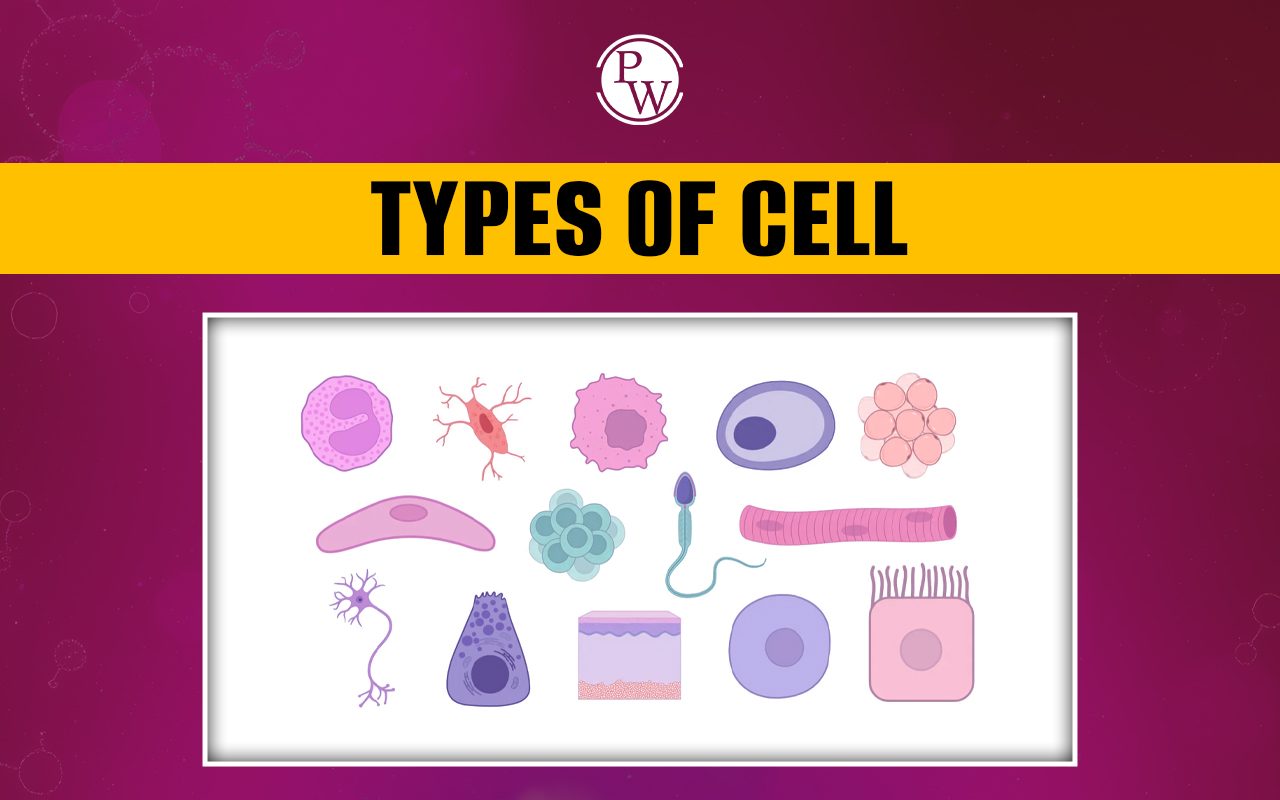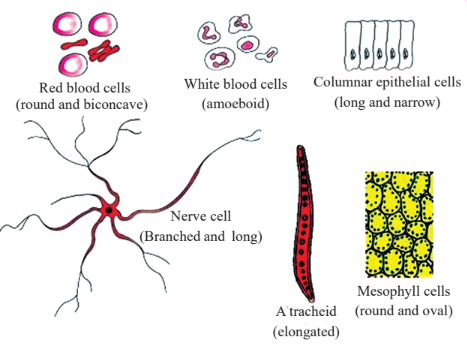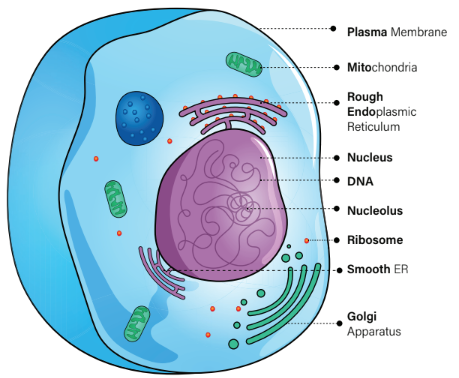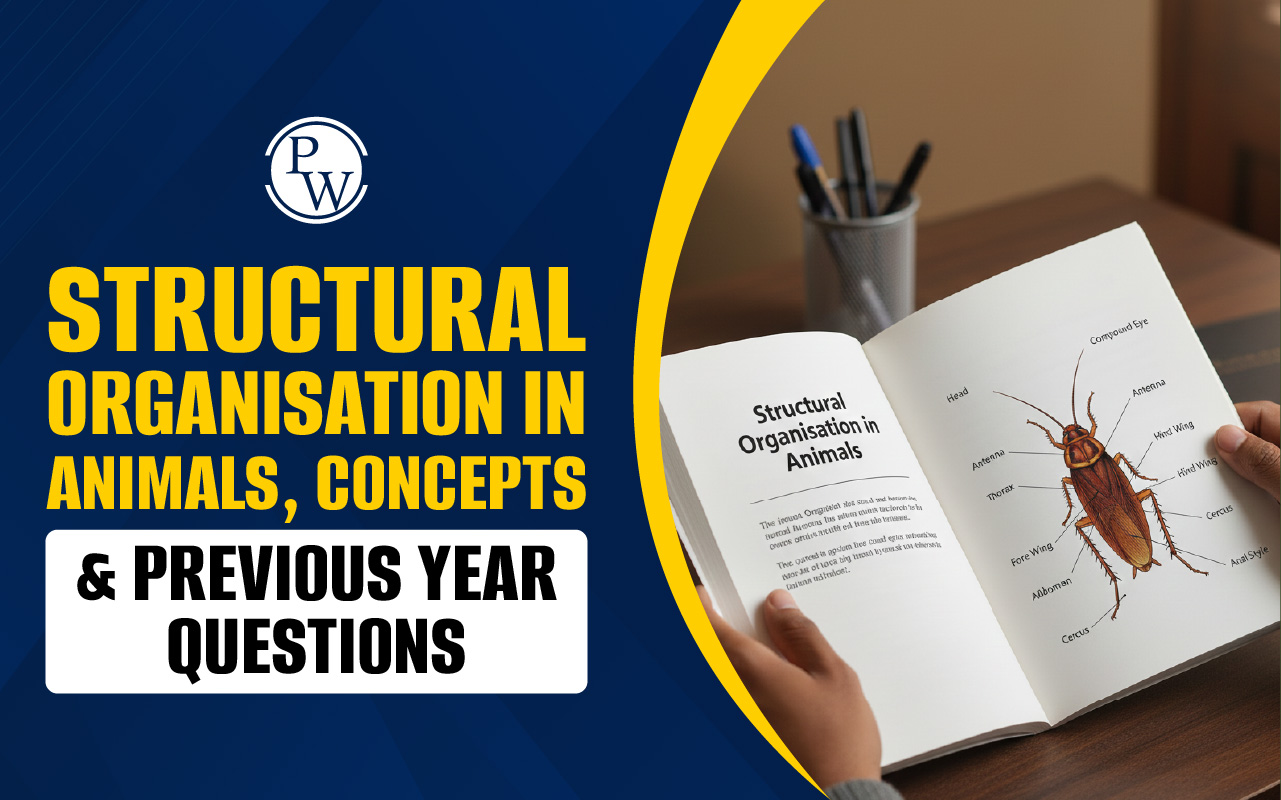

Cells are the basic units of life, and there are two main types, prokaryotic cells and eukaryotic cells . Prokaryotic cells, like bacteria, are simple and lack a true nucleus, while eukaryotic cells, found in plants and animals, have a well-defined nucleus and organelles. Understanding the differences between these cell types is essential for the NEET Exam , as it forms a key part of the cell chapter in the NEET syllabus .
Types of Cell
Cells, the fundamental units of life, exhibit diversity in their types, shapes, sizes, and nuclear organization. They can be broadly classified into prokaryotic cells, which are typically smaller, simpler, and lack a true nucleus, and eukaryotic cells, which are larger, more complex, and contain a defined nucleus. The shapes of cells vary widely, ranging from spherical and rod-like to spiral and filamentous.Types of Cell Based on Shape and Size
Cells differ significantly in size, shape, and function. Their forms range from disc-like, polygonal, columnar, cuboidal, and thread-like, to irregular shapes, often tailored to the specific roles they play. The table below outlines various important cell types, along with their unique characteristics and sizes.| Types of Cell based on Shape and Size | |
|---|---|
| Cell Type | Feature/Size/Shape |
| Mycoplasma | Smallest cell; 0.3 μm in length |
| Bacteria | 3-5 μm in size |
| Ostrich Egg | Largest isolated single cell |
| Human Red Blood Cell (Erythrocyte) | 7.0 μm in diameter |
| Nerve Cells (Neurons) | Longest cells in humans |

Types of Cell based on Nuclear Organisation
Cells, much like factories, perform a variety of tasks, with different types suited to specific roles. Based on their nuclear structure, cells can be classified into two categories: Prokaryotic and Eukaryotic cells.Prokaryotic Cell
Prokaryotic cells are single-celled microorganisms and some of the earliest life forms on Earth. Among these organisms are various types of prokaryotes, including extremophiles that can thrive in extreme conditions. Additionally, some prokaryotes are photoautotrophic, allowing them to produce nutrients using sunlight. They include various types of bacteria and are known for their remarkable diversity in shape and size.- Bacillus (rod-shaped) : These bacteria are elongated and can appear as individual cells or in small chains. An example is Bacillus coagulans.
- Coccus (spherical) : These bacteria are round or oval in shape, such as Streptococcus pyogenes.
- Vibrio (comma-shaped) : These bacteria have a curved, comma-like shape, such as Vibrio cholerae.
- Spirillum (spiral-shaped): These bacteria have a spiral or helical form, like Spirillum minus.

Structure of Prokaryotic Cell
Prokaryotic cells have a simple structure but are highly organized. Here’s a closer look at their main components:- Cell Wall : The cell wall gives shape and support to the cell.
- Gram-positive bacteria have a thick wall made of peptidoglycan, while Gram-negative bacteria have a thinner wall and an outer lipid layer.
- Plasma Membrane : This is a thin layer that surrounds the cell and controls what enters and exits. It works similarly to the membranes in eukaryotic cells.
- Nucleoid: This is where the genetic material (DNA) is located. Unlike eukaryotic cells, prokaryotic cells do not have a membrane-bound nucleus.
- Ribosomes : Prokaryotic ribosomes are smaller than those in eukaryotic cells and are crucial for making proteins.
- Cytoplasm: The jelly-like substance inside the cell that contains water, proteins, and other important molecules.
- Plasmids : Small circular DNA molecules that can carry genes for traits like antibiotic resistance.

Cell Envelope and its Modifications
The cell envelope in prokaryotic cells consists of three layers: the glycocalyx, cell wall, and plasma membrane.- Glycocalyx: The outermost layer, which can be a slime layer (loose) or a capsule (thick), provides protection and helps in adhesion to surfaces.
- Cell Wall : The cell wall is the middle layer, providing shape and structural support to the cell. It prevents the cell from bursting or collapsing under varying environmental pressures. The structure of the cell wall differs between Gram-positive and Gram-negative bacteria:
- Gram-positive Bacteria : These have a thick layer of peptidoglycan (a sugar-protein compound) that makes their cell wall rigid and helps retain the violet color during Gram staining.
- Gram-negative Bacteria : These have a thinner layer of peptidoglycan and an additional outer membrane made up of lipids. This outer lipid layer provides extra protection, but Gram-negative bacteria do not retain the violet color during Gram staining, instead absorbing a pink or red counterstain.
- Plasma Membrane: The innermost layer regulates the transport of substances and plays a key role in cellular functions like respiration.
- Mesosomes : These are infoldings of the plasma membrane that play essential roles in cell division, DNA replication, and respiration.
- Chromatophores : Present in some photosynthetic prokaryotes like cyanobacteria, chromatophores are membrane-bound extensions that contain pigments and are involved in photosynthesis.
- Motility : Some bacterial cells can move using flagella, which are thin, hair-like extensions of the cell wall. These flagella are made up of three parts: the filament, hook, and basal body, all of which work together to enable the cell's movement.
- Ribosomes: Prokaryotic ribosomes , which are about 15 by 20 nanometers in size, are attached to the plasma membrane and are responsible for synthesizing proteins.
Eukaryotic Cell
A eukaryote is any cell or organism that has a clearly defined nucleus. In eukaryotic cells , the nucleus is surrounded by a nuclear membrane, which holds chromosomes that contain the genetic material. These cells also have other important parts called organelles, such as mitochondria, the Golgi apparatus, the endoplasmic reticulum, and lysosomes.Structure of Eukaryotic Cell
Eukaryotic cells are complex and organized into several specialized structures called organelles, each with a distinct function. These organelles are enclosed within membranes, making them different from prokaryotic cells, which lack membrane-bound structures. Below is an overview of the key components of a typical eukaryotic cell:- Nucleus : The nucleus is the control center of the cell. It is surrounded by a nuclear membrane or nuclear envelope, which protects the genetic material (DNA) inside. The nucleus contains chromosomes that carry the cell’s hereditary information.
- Nuclear Membrane (Nuclear Envelope) : The nuclear membrane surrounds the nucleus and contains nuclear pores that control the movement of molecules between the nucleus and the cytoplasm , allowing only certain substances to pass through.
- Endoplasmic Reticulum (ER) : The ER is a network of membranes involved in the production and transportation of substances within the cell.
- Ribosomes: These are small, non-membrane-bound structures found on the rough ER or floating in the cytoplasm. They are responsible for protein synthesis.
- Golgi Apparatus: The Golgi apparatus is involved in modifying, sorting, and packaging proteins and lipids for transport to their final destinations within or outside the cell.
- Mitochondria: Known as the "powerhouse of the cell," mitochondria are where energy is produced through cellular respiration. They convert nutrients into ATP (adenosine triphosphate), the energy currency of the cell.
- Lysosomes : These are small, enzyme-filled sacs that digest waste materials and unwanted substances within the cell, playing a key role in maintaining cellular health.
- Plasma Membrane: The plasma membrane encases the cell and regulates the movement of substances in and out. It is selectively permeable, which means it permits only specific molecules to pass while blocking others.
- Cytoskeleton: The cytoskeleton is a network of protein fibers that provides structural support, helps maintain cell shape, and facilitates movement within the cell.
- Vacuoles : Found mainly in plant cells, vacuoles store nutrients, water, and waste products. In plant cells, they also help maintain pressure and provide structural support.
- Chloroplasts : Present only in plant cells and some algae, chloroplasts are responsible for photosynthesis, the process by which plants make food using sunlight, carbon dioxide, and water.
Function of Different Type of Cell
Cells can be classified into various types, each designed to perform specific functions within an organism. Here’s an overview of the functions of different types of cells:- Prokaryotic cells carry out various metabolic processes, including cellular respiration, fermentation, and photosynthesis, depending on the species.
- Eukaryotic cells have a nucleus that houses the cell's genetic material (DNA). This allows for more complex regulation of gene expression and cell division.
- Epithelial cells create protective layers on both external and internal surfaces of the body. They play key roles in absorption, secretion, and sensory functions.
- Muscle cells are specialized for contraction and movement. They enable locomotion and facilitate various bodily functions such as circulation and digestion.
- Blood cells play crucial roles in transportation, immune response, and clotting.
- Stem cells are undifferentiated cells with the potential to transform into different cell types. They are essential for growth, tissue repair, and regeneration.
MCQs of Type of Cell
Q1. Which of the following is the largest isolated single cell?
- Nerve cell
- Mycoplasma
- Ostrich egg
- RBCs
Q2. Which of the following cells has a diameter of 7 micrometers?
- Erythrocyte
- Monocyte
- Neuron
- Blood platelets
Q3. Which of the following is called the smallest cell?
- Bacteria
- Mycoplasma
- Yeast
- Blue-green algae
Answers of MCQs Type of Cell
Ans1 . (3)Ostrich Egg,| NEET Exam Important Links | |
|---|---|
| NEET Biology Syllabus | NEET Biology Diagrams |
| NEET Biology MCQ | NEET Biology Chapter wise Weightage |
| NEET Biology Notes | NEET Previous Year Question papers |
Type of Cell FAQs
Q. What are the 3 basic types of cells?
Ans. The three basic types of cells are prokaryotic cells (like bacteria), eukaryotic cells (like plant and animal cells), and archaeal cells (similar to bacteria but found in extreme environments).
Q. What are two types of cells?
Ans. The two main types of cells are prokaryotic cells (simple, without a nucleus) and eukaryotic cells (complex, with a nucleus).
Q. What are 10 types of cells?
Ans. Ten types of cells include: Red blood cells, White blood cells, Muscle cells, Nerve cells, Epithelial cells, Stem cells, Adipose cells, Bone cells, Cartilage cells, and Endothelial cells.
Q. Do all cells have DNA?
Ans. Yes, all cells contain DNA, which carries genetic information. Prokaryotic cells have a single circular DNA molecule, while eukaryotic cells have linear DNA organized in chromosomes.
Talk to a counsellorHave doubts? Our support team will be happy to assist you!

Check out these Related Articles
Free Learning Resources
PW Books
Notes (Class 10-12)
PW Study Materials
Notes (Class 6-9)
Ncert Solutions
Govt Exams
Class 6th to 12th Online Courses
Govt Job Exams Courses
UPSC Coaching
Defence Exam Coaching
Gate Exam Coaching
Other Exams
Know about Physics Wallah
Physics Wallah is an Indian edtech platform that provides accessible & comprehensive learning experiences to students from Class 6th to postgraduate level. We also provide extensive NCERT solutions, sample paper, NEET, JEE Mains, BITSAT previous year papers & more such resources to students. Physics Wallah also caters to over 3.5 million registered students and over 78 lakh+ Youtube subscribers with 4.8 rating on its app.
We Stand Out because
We provide students with intensive courses with India’s qualified & experienced faculties & mentors. PW strives to make the learning experience comprehensive and accessible for students of all sections of society. We believe in empowering every single student who couldn't dream of a good career in engineering and medical field earlier.
Our Key Focus Areas
Physics Wallah's main focus is to make the learning experience as economical as possible for all students. With our affordable courses like Lakshya, Udaan and Arjuna and many others, we have been able to provide a platform for lakhs of aspirants. From providing Chemistry, Maths, Physics formula to giving e-books of eminent authors like RD Sharma, RS Aggarwal and Lakhmir Singh, PW focuses on every single student's need for preparation.
What Makes Us Different
Physics Wallah strives to develop a comprehensive pedagogical structure for students, where they get a state-of-the-art learning experience with study material and resources. Apart from catering students preparing for JEE Mains and NEET, PW also provides study material for each state board like Uttar Pradesh, Bihar, and others
Copyright © 2025 Physicswallah Limited All rights reserved.
Get App











